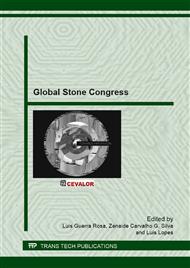p.287
p.295
p.304
p.317
p.329
p.336
p.348
p.363
p.371
Stone Materials, Constructions Techniques and Alterations in Historic Buildings: Examples from Minas Gerais, in Brazil and from the Braga and Viseu Districts in Portugal
Abstract:
The use of stone materials in constructions and in the art of sculpture in Brazil, as well as the related constructions techniques employed, was strongly influenced by Portugal between the mid-sixteenth century and the early nineteenth century. One of those techniques consisted of erecting the whole constructions using stone materials, without the use of mortar, by solely juxtaposing smaller and larger stones. Some remaining buildings and descriptions dating back to the beginning of the twentieth century, involving the use of carved stone in “mineiro” – or Minas Gerais – constructions, known as minhota, or made in the fashion of Minho, bear proof to the use of that technique and, specially, to the influence this ancient Portuguese province had on the constructing style and on the way of working the stones in Minas Gerais. However, when we consider the frequency with which that technique was used, there is evidence that the use of “stone blocks” was much more common in certain regions of Portugal such as in constructions situated in the district of Braga, in the old province of Minho. Also from Portugal, from the old province of Beira Alta, there should be considered beautiful examples of constructions featuring the use of the dry stone technique which involved utilizing blocks of granitic rock as those seen in the Viseu district. In addition to the description of the stone materials utilized in these buildings, both Brazilian and Portuguese, and in the production of several sculptural elements associated with some of these architectural sets, evidence is provided which shows the occurrence of very similar deterioration processes which are responsible for the imprinting of certain features into these cultural assets, identified by the loss of materials and formation of crusts due to biological colonizations.
Info:
Periodical:
Pages:
336-347
Citation:
Online since:
April 2013
Authors:
Price:
Сopyright:
© 2013 Trans Tech Publications Ltd. All Rights Reserved
Share:
Citation:


